SEO, Social Media, Web Development
The Insanely Simple SEO Strategy for 2022 (The Orchard Strategy)
- By Brett Belau
10 Mar

Everyone’s SEO strategy is pretty much the same at a high level: find keywords that people are searching for and try to rank for them.
But there are easy and hard ways to go about this.
In this guide, we’ll run through a simple SEO strategy to help you get the most results for the least amount of effort.
What is an SEO strategy?
An SEO strategy is a plan of action designed to help you rank higher in Google and get more organic search traffic. It’s the process you follow to achieve your SEO goals.
How to create a successful SEO strategy
The most successful SEO strategies revolve around the efficient creation and optimization of content. There are many trains of thought around how to do this, but we’re going to keep things simple with what we like to call the Orchard Strategy.
Here’s the process:
- Plant trees (pages)
- Pick low-hanging fruits (first-page keyword rankings)
- Squeeze more juice out of them (optimize)
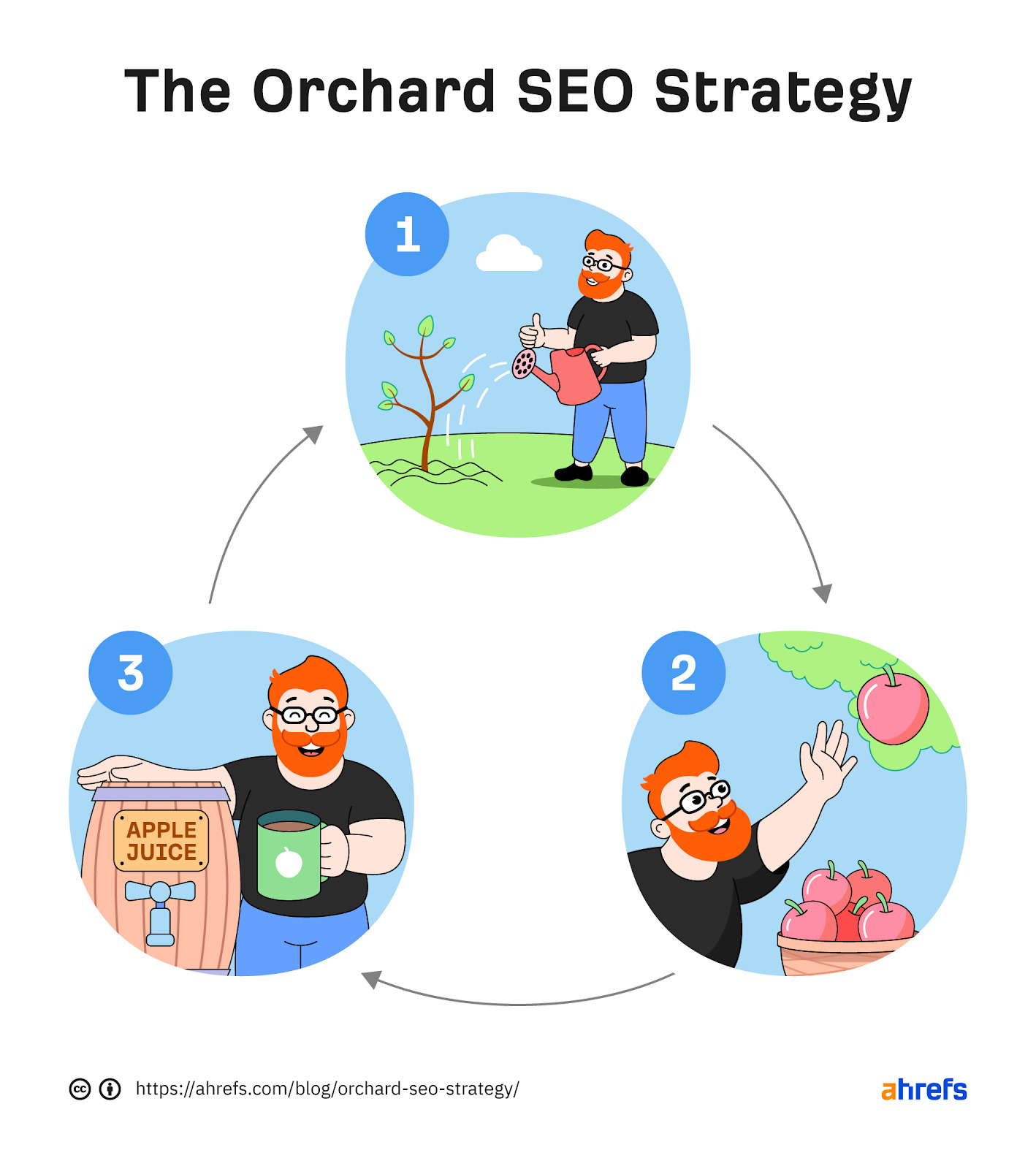
1. Plant trees
Just as it’s impossible to grow apples without planting trees, it’s impossible to rank in Google without creating and optimizing content. For that reason, the first step is to do keyword research and publish optimized content.
Let’s look at the basics of how to do that.
a) Use a keyword research tool
Keyword research is the process of finding what people are searching for. There are many ways to do this. But using a keyword research tool like Ahrefs’ Keywords Explorer is a good starting point, as it allows you to find hundreds of thousands of keyword ideas.
To use it, enter a word or phrase, hit search, and go to a keyword ideas report.
For example, if we search for “search engine optimization,” we see almost 7,000 keyword ideas with thousands of monthly searches, including the following:
- what is search engine optimization
- local search engine optimization
- search engine optimization tools
If you want to know how much traffic you can potentially attract by ranking #1 for these keywords, look at the Traffic Potential (TP) column. This shows how much estimated monthly organic traffic the current top-ranking page gets.
b) Craft content for search intent
People are usually looking for something specific when they type a query into Google, so it’s important to align your content with that to stand the best chance of ranking. This is known in the SEO world as matching search intent.
You can usually get a good sense of search intent by looking at the top results for a query.
For example, if we look at the top three results for “organic search,” we see that they’re all pages with definitions:
If we want to stand the best chance of ranking, we should probably follow suit and create something similar.
Recommended reading: What Is Search Intent? A Complete Guide for Beginners
c) Do on-page SEO
Matching search intent is the most important thing to master for content optimization, but basic on-page SEO is also important. This means optimizing your title tag, URL, and meta description.
Here are our best tips for optimizing these three things:
- Make sure the title and meta description align with search intent
- Make sure your title tag doesn’t truncate
- Include your target keyword in the title
- Use a short descriptive URL
- Write a compelling meta description
Recommended reading: On-Page SEO: Complete Beginner’s Guide
2. Pick low-hanging fruits
Given some time, your seeds will start to grow and bear fruit. In other words, you’ll (hopefully) start ranking on the first page of Google for some of your target keywords.
However, this often isn’t enough to send much organic traffic your way—thanks to the exponential decline in clickthrough rates on the first page.
For example, most CTR curves say that you get around 1.9% of clicks if you rank in position #6 and 7% in position #3.
That means you stand to get ~268% more traffic from a keyword by ranking three spots higher.
Because of this, keywords ranking in positions #2–10 are arguably the lowest hanging fruits in SEO—and the ones that deserve most of your attention.
However, the potential to get more traffic isn’t the only factor to take into account when looking for low-hanging fruits. You should also consider how much value those keywords and pages bring to your business.
Let’s look at how to do this.
a) Look for keywords in positions #2–10
If you’re already tracking the main keywords you’re targeting for your pages in a tool like Rank Tracker, filter for keywords you rank for in positions #2–10 and sort by estimated traffic or monthly search volume from high to low.
This shows you pages that are already performing quite well for their main target keywords, but where there’s also room for improvement.
If you don’t use a rank tracking tool, sign up for a free Ahrefs Webmaster Tools account and do this:
- Enter your website in Site Explorer
- Go to the Organic keywords report
- Filter for keywords in positions #2–10
- Look for keywords that you’re targeting
For example, if we do this for the Ahrefs Blog, we see that we’re ranking in position #7 for “affiliate marketing.” This keyword gets an estimated 106K monthly searches in the U.S., so it could potentially be a low-hanging SEO opportunity in the sense that we could significantly boost our organic traffic by ranking a few spots higher.
b) Prioritize the most lucrative keywords
There’s no point in pursuing higher keyword rankings if the extra traffic is unlikely to have much impact on your bottom line, so it’s important to factor in the “business value” of the keywords and pages in question too.
If you’re tracking conversions in Google Analytics, this should give you some idea about how lucrative the extra traffic is likely to be. If not, you’ll have to make your best guess from the keyword and page itself.
Here’s the “business value” scale we use for keywords/content at Ahrefs:
3. Squeeze more juice out of them
Low-hanging fruits in hand, the next step is to learn how to squeeze more juice out of them. This means figuring out the possible reasons why they’re not ranking higher and making improvements in those areas.
To do this economically, start with the easier things within your control. If those don’t work or there’s still room for improvement after, move on to the more challenging things.
Here’s the process we recommend:
Let’s go through this process step by step.
a) Make sure it covers the topic fully
Given that your content is already performing quite well for its target keyword, it’s clearly a decent match for search intent. In other words, it fits the bit of what searchers are looking for on the whole.
However, there could still be things you missed, and it’s often possible to improve rankings by updating and incorporating them into your content.
Here’s a simple way to find these subtopics:
- Paste your page URL in Site Explorer
- Go to the Content Gap report
- Enter the URLs of similar pages that outrank you
- Hit “Show keywords”
For example, if we do this for our guide to guest blogging, we see that competing pages are ranking for a bunch of keywords related to guest blogging guidelines:
We completely neglected to talk about this in our post, so it would probably make sense to add a short section about this. Not only will that make the guide more useful for searchers (it’s clearly something they want to know about), but it may also indicate to Google that we’re more comprehensively covering the topic and deserve to rank higher.
b) Make sure your on-page SEO is on point
You should have already done basic on-page SEO when you published your content, but there may still be opportunities for improvement—especially with your title tag and meta description.
For that reason, it’s worth having another quick look at how your page looks in the context of the SERP and asking yourself:
- Does it still align well with intent?
- Could either of them be more compelling?
- Are either of them truncating?
Fix any issues you find.
c) Make sure it’s internally linked where relevant
Internal links are links from one page on your website to another. They help visitors navigate your website and pass PageRank to pages, which can help them rank higher in Google.
For that reason, as a general rule of thumb, you should internally link all relevant, contextual opportunities on your site. So a quick win when you’re looking to boost a page on the SERPs is to look for missed internal linking opportunities and add the internal links.
One of the easiest ways to find these is with the Link Opportunities tool in Site Audit, which you can use for free with AWT.
Here’s how to use it:
- Click the advanced filter
- Click +Rule
- Select “Target page” from the first dropdown
- Enter the page URL in the value field
For example, if we enter the URL of our keyword research guide, we see 71 potential internal linking opportunities:
You can see that Site Audit shows the source page, keyword (which can be used as anchor text), and the context of that keyword on the page, among other things. This makes it easy to locate and add the internal link to the page.
If you don’t see many results in the Link opportunities report—which can happen if the target page doesn’t rank for many keywords—you can opt for a more manual approach using the Page Explorer tool. Here’s how:
- Click the advanced filter
- Click +Rule
- Select “Page text” from the first dropdown
- Enter a relevant word or phrase in the search box
- Click +Rule
- Select “Internal outlinks” from the dropdown
- Change the second dropdown to “Not contains”
- Enter the URL of the target page in the blank field
- Hit “Apply”
This searches for mentions on pages that don’t internally link to the target page.
For example, we see 40 pages that mention the phrase “guest blogging” but don’t internally link to our guest blogging guide:
Many of these pages are undoubtedly relevant and worthwhile places to add internal links to our guide.
d) Make sure its link profile is strong enough
Backlinks are links on one website to another, and they’re one of Google’s three major ranking factors. This means that if your page has significantly fewer high-quality backlinks than the pages above it, you’ll probably struggle to rank higher in the short to medium term.
For example, our link building guide ranks in position #4 for “link building” and has backlinks from 900+ referring domains (websites).
Unfortunately, the pages outranking us have more than twice the number of referring domains—so we probably won’t rank higher anytime soon.
However, if you’re not too far off the competition, getting a few more high-quality backlinks could make all the difference.
For example, we rank in the second organic ranking position for “keyword cannibalization” and have roughly the same number of referring domains as the page outranking us:
We could probably outrank this page in all likeliness by building just a few more decent backlinks. We’ve covered link-building tactics extensively on the blog already, so check out the resources below if you need more links.
Struggling to get backlinks?
Link building is hard, especially if your content has commercial value. So if you’re struggling to build quality backlinks directly to the page you want to rank, give the Middleman Method a shot.
Here’s how it works in a nutshell:
- Find or create a piece of informational content on a similar topic.
- Build links to that content.
- Internally link from there to your “money” page to boost its PageRank.
Learn more in this video or this blog post.
4. Rinse and repeat
The key to success with this SEO strategy is to keep growing and picking low-hanging fruit. You do that by consistently publishing new SEO-focused content and re-optimizing the pages that start to perform well for their target keywords.
However, while this is an efficient strategy, you shouldn’t be afraid to allocate resources to pursuing the juiciest SEO opportunities—even if they’re hard to reach.
In the context of SEO, the juiciest opportunities are those that:
- Have high traffic potential.
- Have high “business value.”
For example, if you sell blue widgets online, the keyword “blue widgets” is probably an extremely juicy SEO opportunity for you. For that reason, it would probably be wise to allocate resources to ranking for this keyword from the very beginning.
Final thoughts
Ranking in Google is a bit of a plate-spinning exercise. As you’re trying to rank for one keyword, your rankings for other keywords will inevitably start to drop. That’s why the strategy above is cyclical (and never-ending). It relies on you consistently creating and tackling more low-hanging SEO opportunities.
Got questions? Ping me on Twitter.
Source: ahrefs.com, originally published on 2022-03-10 00:00:00
Connect with B2 Web Studios
Get B2 news, tips and the latest trends on web, mobile and digital marketing
- Appleton/Green Bay (HQ): (920) 358-0305
- Las Vegas, NV (Satellite): (702) 659-7809
- Email Us: [email protected]

© Copyright 2002 – 2022 B2 Web Studios, a division of B2 Computing LLC. All rights reserved. All logos trademarks of their respective owners. Privacy Policy
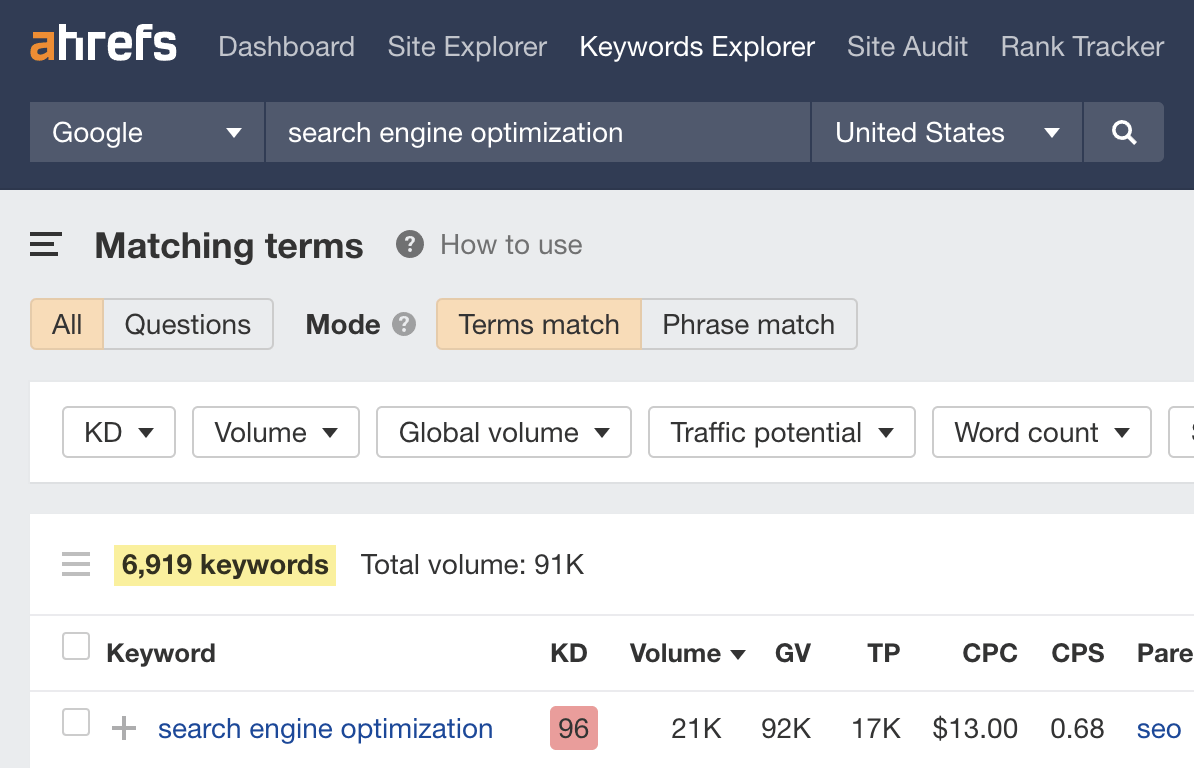
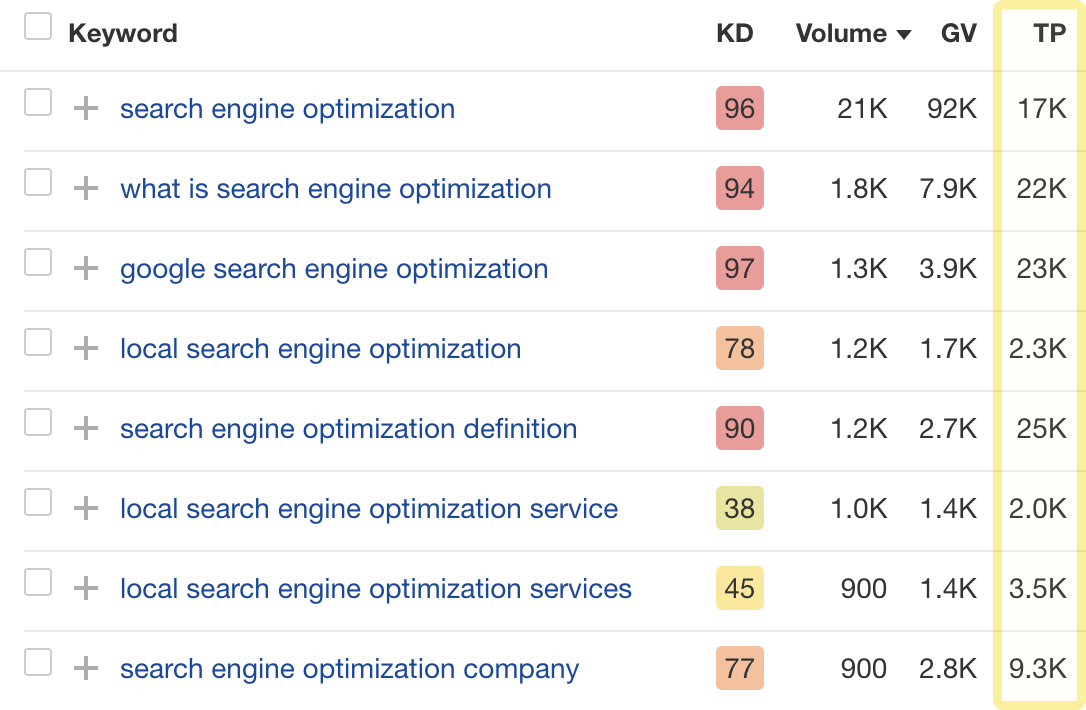
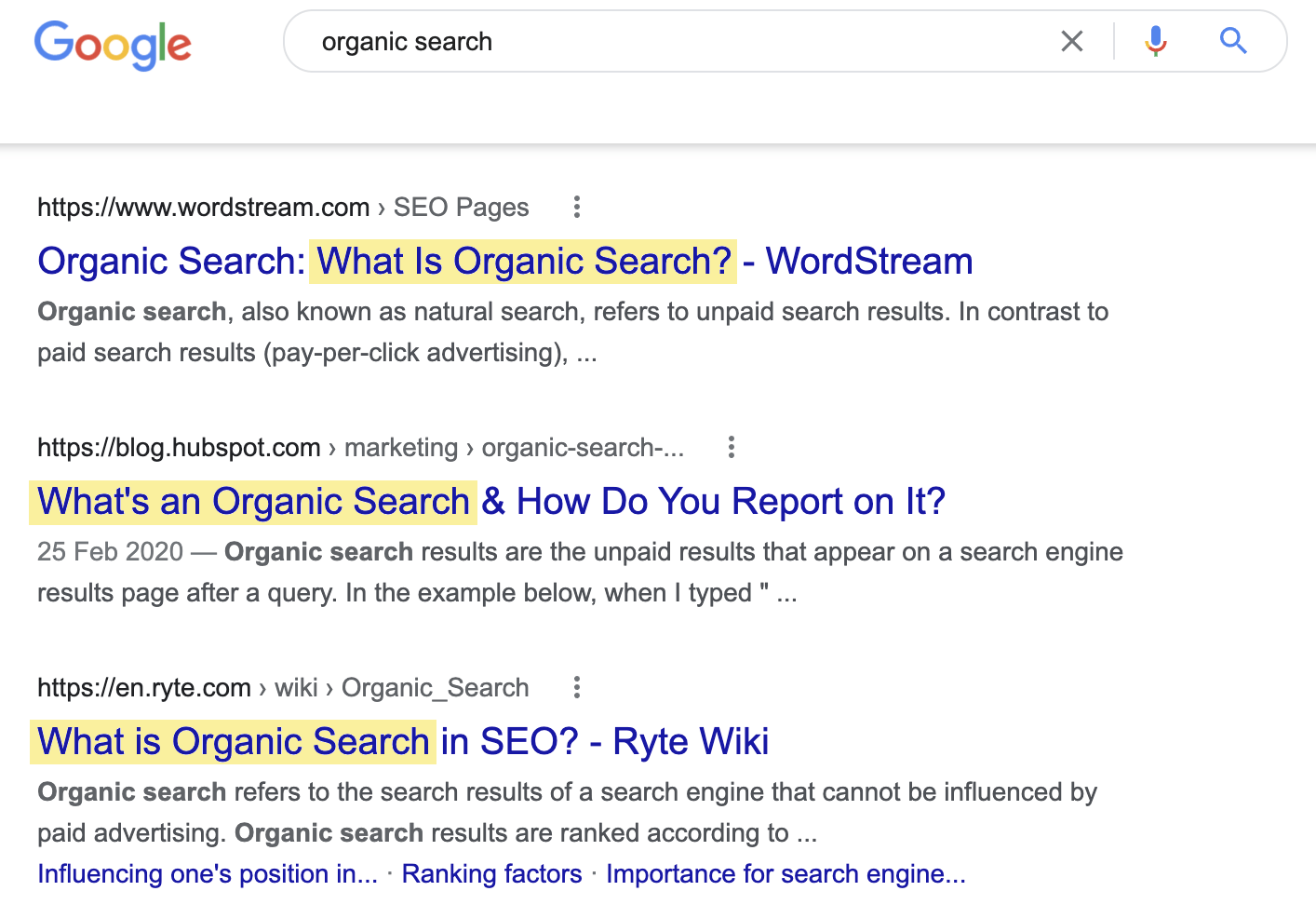

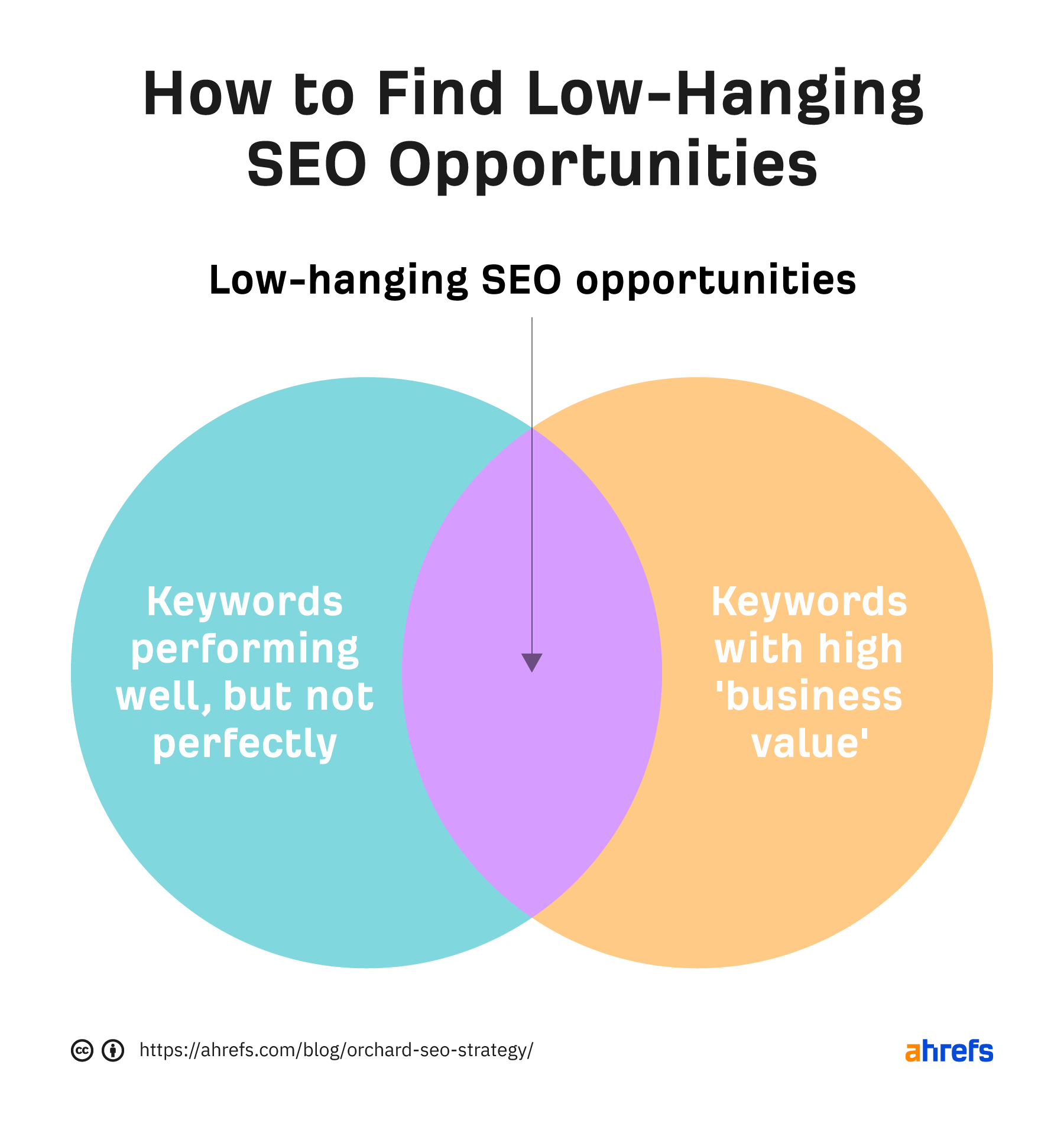
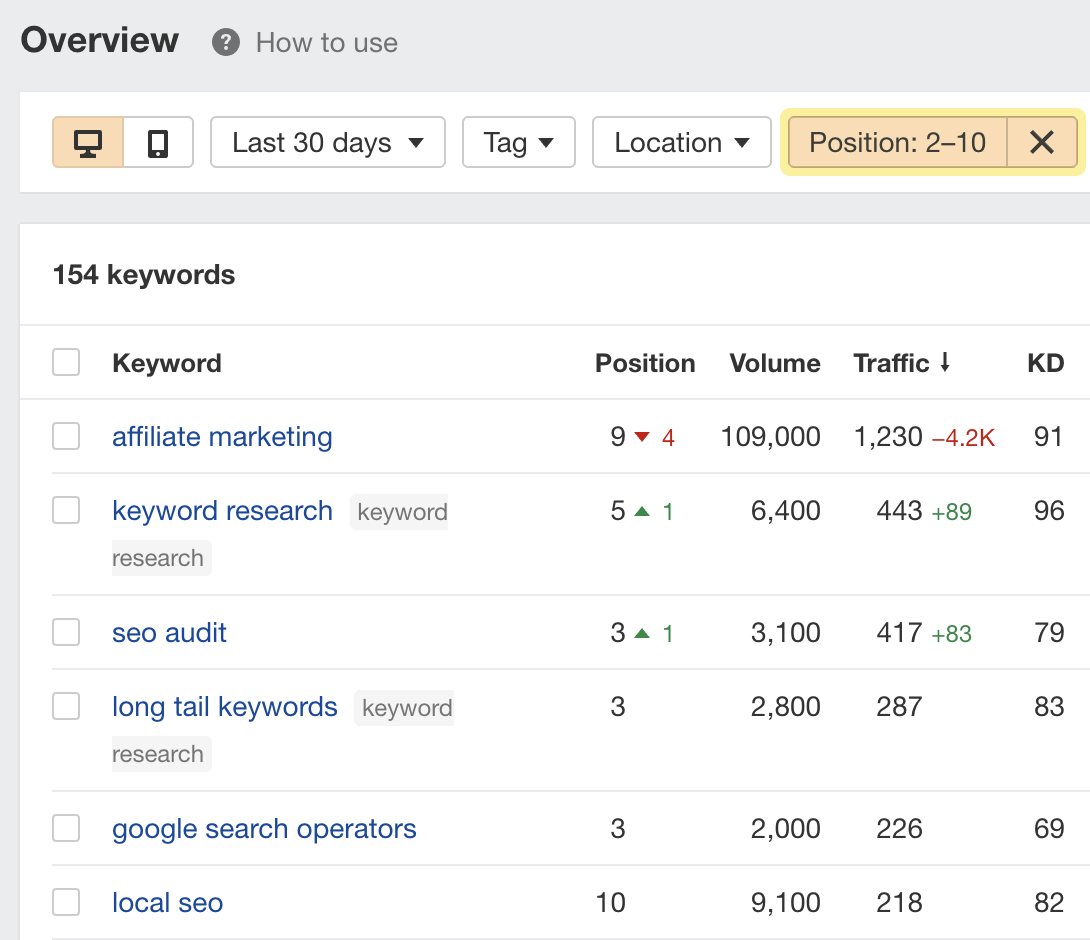
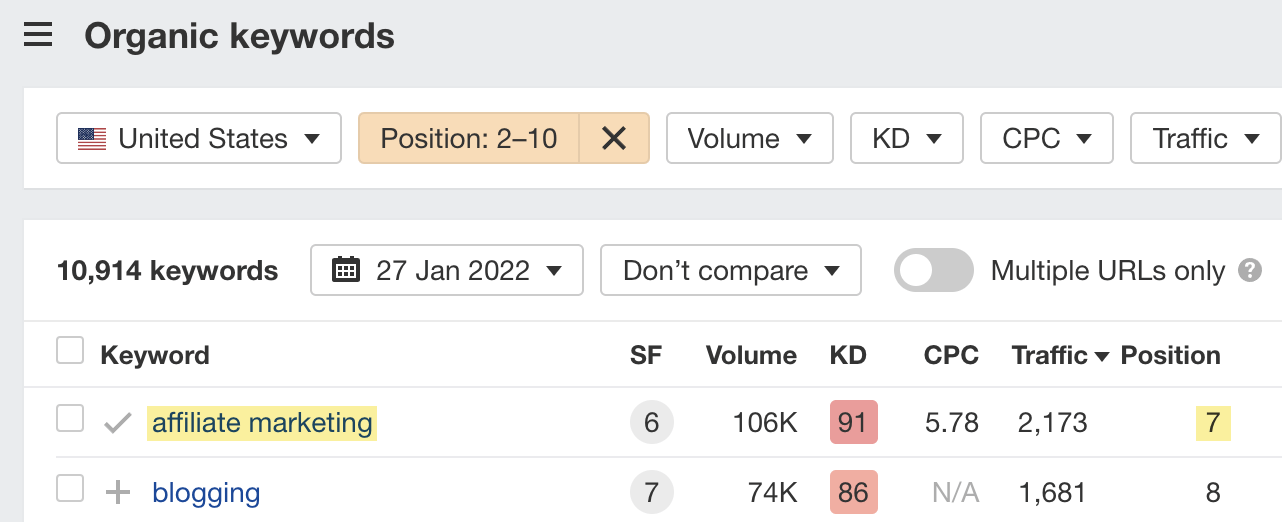
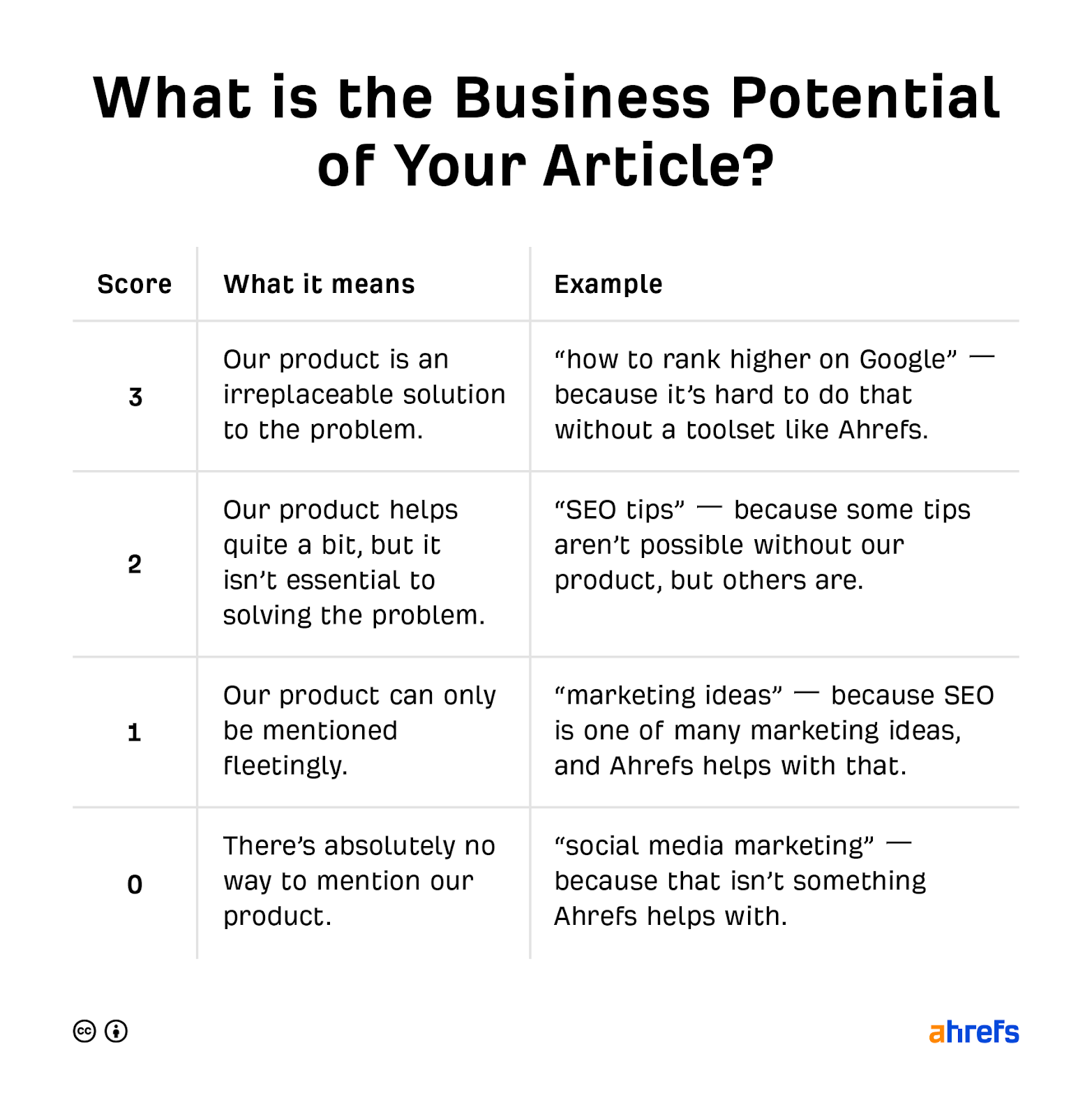

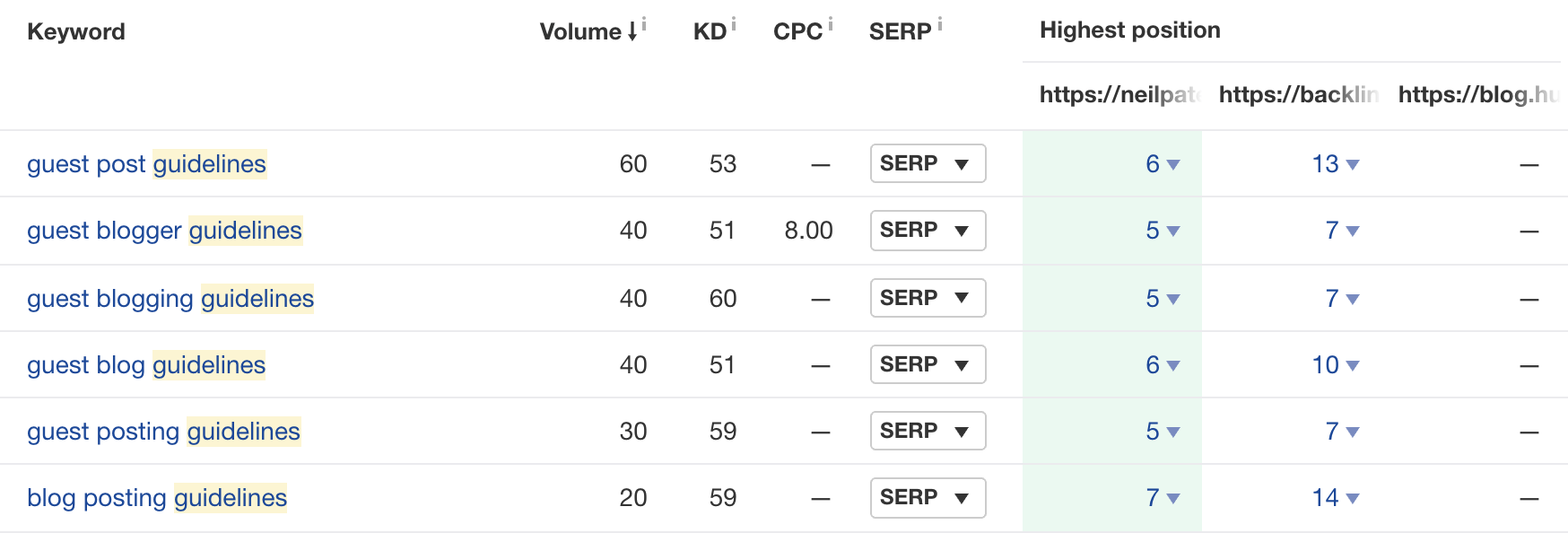


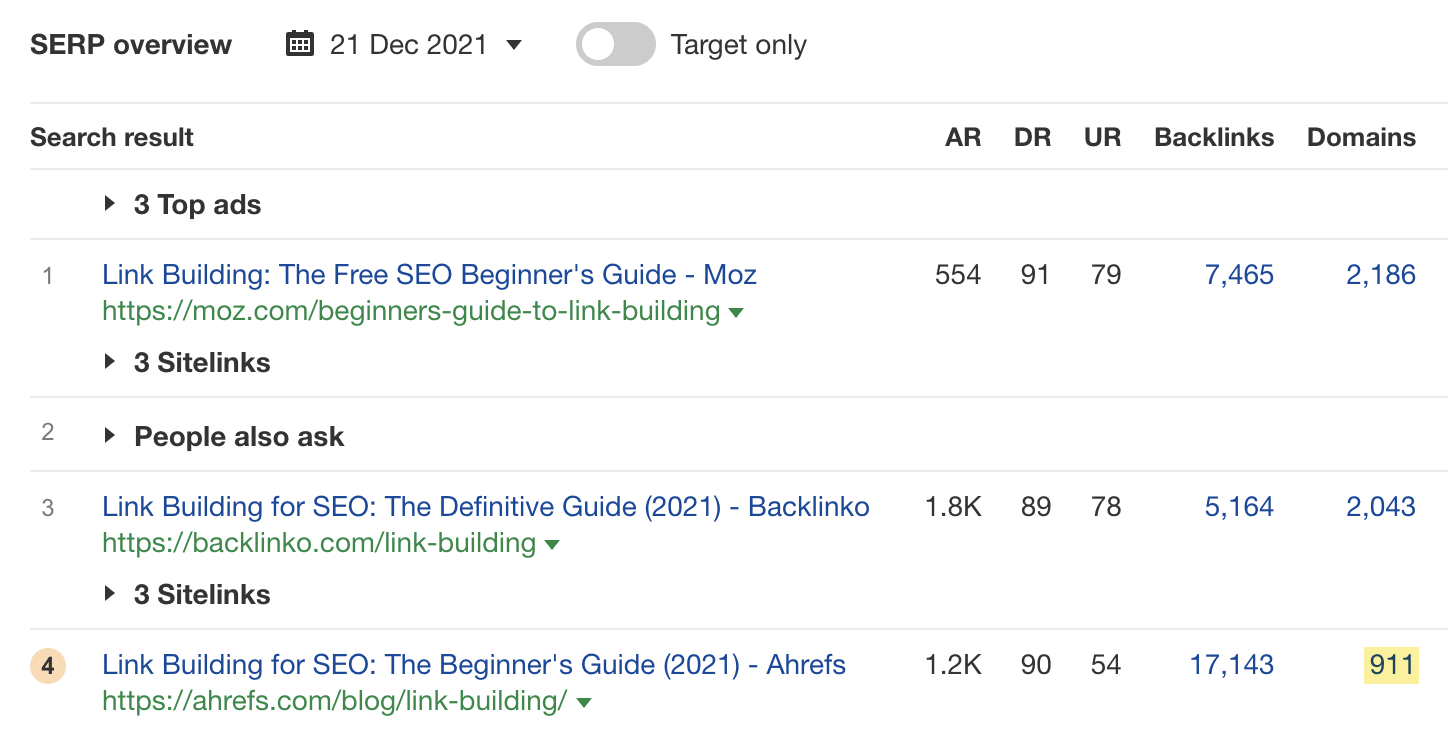


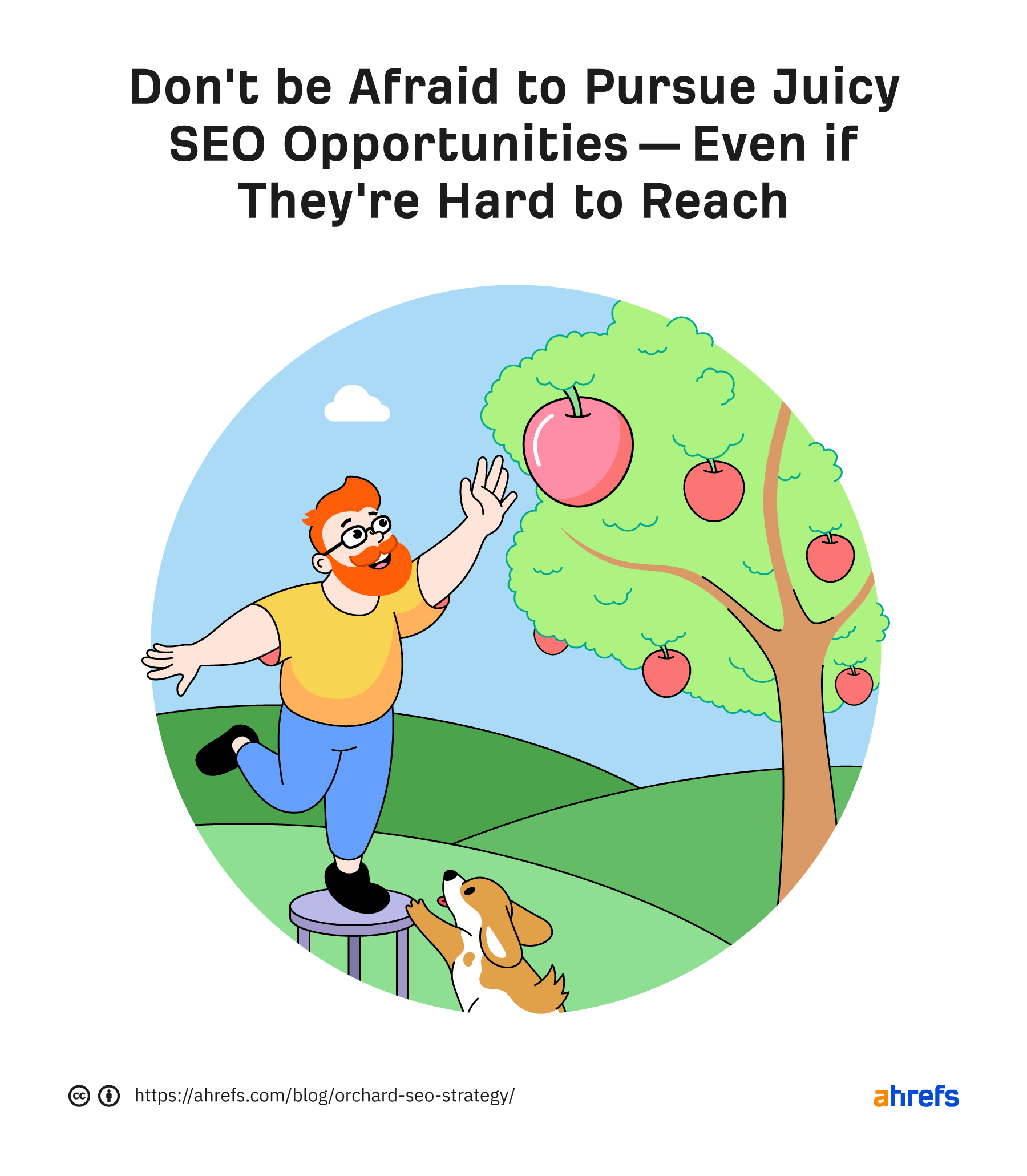
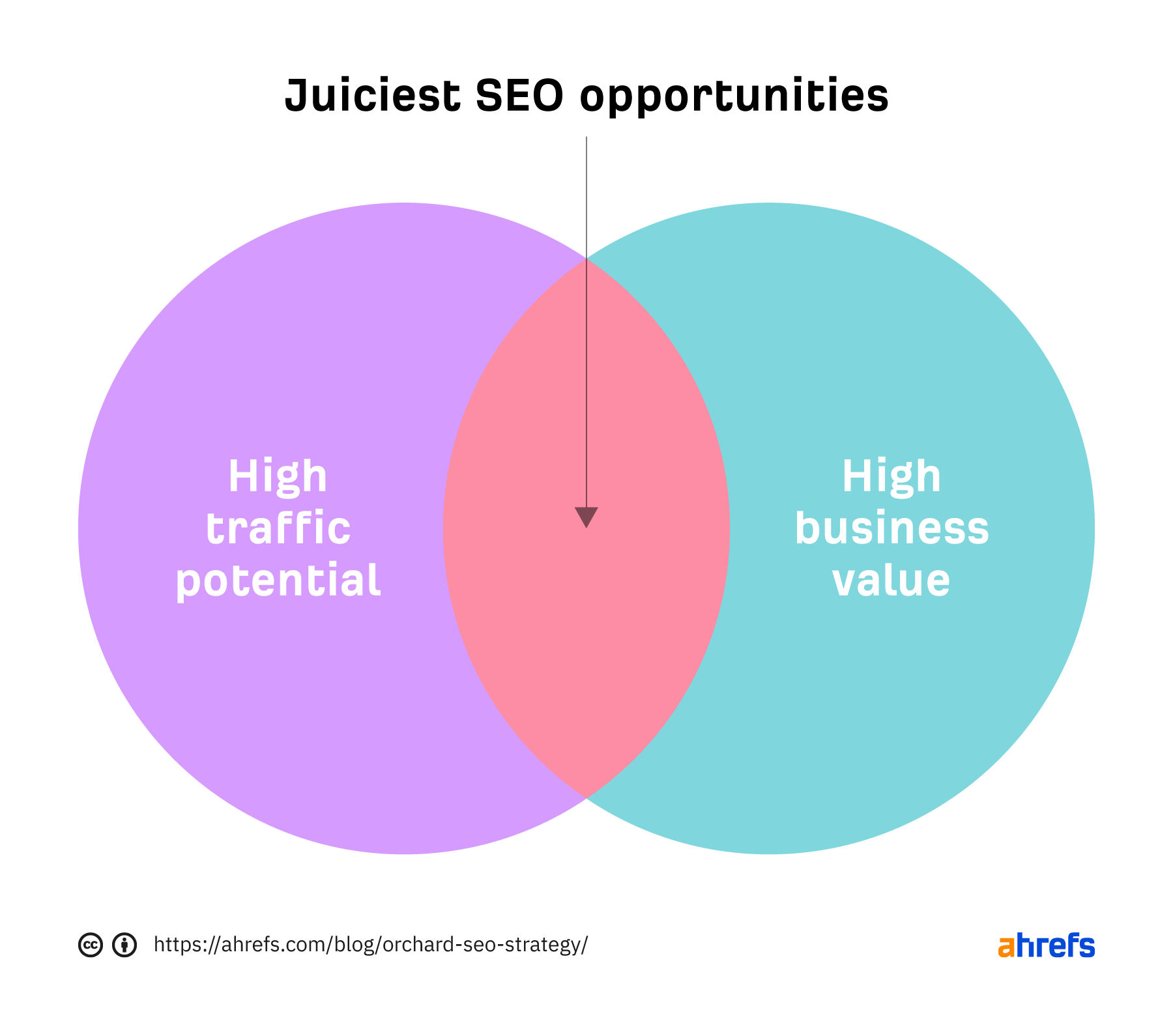

![How to Successfully Use Social Media: A Small Business Guide for Beginners [Infographic]](https://b2webstudios.com/storage/2023/02/How-to-Successfully-Use-Social-Media-A-Small-Business-Guide-85x70.jpg)



![How to Successfully Use Social Media: A Small Business Guide for Beginners [Infographic]](https://b2webstudios.com/storage/2023/02/How-to-Successfully-Use-Social-Media-A-Small-Business-Guide-300x169.jpg)


Recent Comments